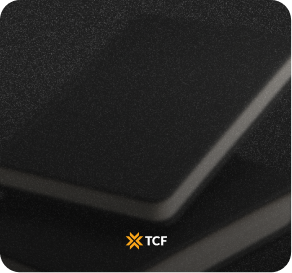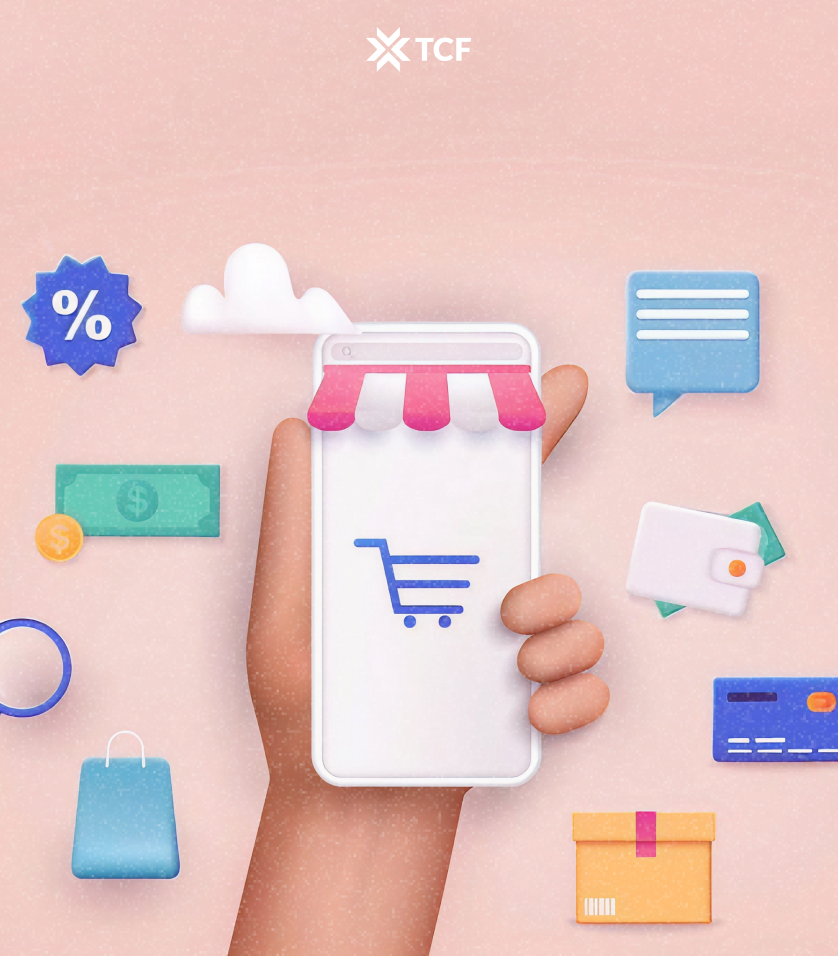There’s a certain kind of customer we all know too well.
They’ve read the reviews. They’ve zoomed in on the product shots. They’ve added it to cart, removed it, added it again. They’re hovering. Waiting. Hoping for a sign from the ecommerce gods.
Scarcity is that sign.
But here’s the thing: most brands overdo it. The fake low-stock alerts. The never-ending countdown timers. The daily “final hours!” emails that somehow reset every morning like Groundhog Day.
This guide is not about that.
We’re getting into the scarcity tactics that actually work in 2025. The ones that feel urgent but not pushy, use real data, real timing, and real psychology to turn hesitation into action without burning trust along the way.
In the sections ahead, you’ll find a breakdown of the main types of scarcity tactics used in ecommerce today, examples from real brands, tips for using them without losing trust, and a few ways to test what actually works for your store.
Let’s start with the psychology behind it.
[[cta5]]
The Psychology Behind Scarcity
Scarcity works because people don’t like missing out on deals, on products, on anything that feels limited. When something appears less available, we assign it more value. That’s basic human wiring.
Psychologists call this loss aversion. The pain of losing something is often stronger than the pleasure of gaining it. So when a product feels like it might slip away, we’re more likely to act quickly, even if we weren’t totally sure we wanted it five minutes ago.
There’s also FOMO, the fear of missing out. If your page shows “Only 2 left” or “100 others viewed this today,” it signals demand. Shoppers start thinking, “If I don’t grab this now, someone else will.”
And then there’s the appeal of exclusivity. People like getting early access, limited editions, and members-only deals because it makes the purchase feel special even if the product isn’t objectively better.
None of this is new. But in ecommerce, the right message at the right moment can take someone from “I’ll think about it” to “I need this right now.” That’s the job scarcity is doing.
Now let’s look at the different ways brands make that happen.
What Are the Main Types of Scarcity Tactics in Ecommerce?
Scarcity isn’t one-size-fits-all. The best brands use different angles depending on the product, audience, and timing. Here are the main types you’ll see (and use) in ecommerce today:
1. Time-Based Scarcity
This is urgency tied to the clock. The most common version is limited-time offers. Think 48-hour discounts, weekend-only sales, or “buy before midnight” promos. These push action by giving shoppers a clear deadline. When they know a deal ends soon, they’re less likely to bounce and “come back later.”
Then there’s the cart reservation timer. Instead of discounting, you’re giving someone a short window to complete their purchase before the item is released. This tactic helps reduce cart abandonment by creating a sense of urgency that feels justified. It’s often used for product drops or high-demand launches and can be just as effective, especially when there’s limited stock in play.
The key here isn’t pressure for the sake of it. It’s about signaling that the offer (or the chance to get this item) won’t last forever and making that feel believable.
2. Quantity Scarcity
Here’s where stock levels come into play. “Only 2 left,” “Going fast,” “Low in stock”. These messages trigger action by signaling demand. Shoppers don’t want to miss out, especially if they think others are already buying.
This works best when the warning is accurate. If you’re showing low stock on every product, shoppers will start tuning it out. Dynamic alerts (like “15 people added this to cart today”) can strengthen the message. Bonus point if it’s paired with social proof.
3. Exclusive Access & Drops
This tactic creates scarcity by gatekeeping. It shows up as subscriber-only sales, early access for loyalty members, invite-only launches, or limited drops through an app.
The appeal goes beyond urgency. These moments feel like perks: reserved, time-sensitive, and worth acting on. People pay attention when something feels gated or exclusive, especially when availability is tied to being part of the “in” group.
It works well for new collections, limited runs, and high-demand items. It also strengthens retention, since customers are more likely to stay engaged when access feels like a reward.
4. Seasonal Scarcity
Pumpkin spice season. Holiday bundles. Summer-only styles. These are products that aren’t available year-round, which makes them feel more urgent when they do show up.
Shoppers know these products have an expiration date. That makes them pay attention, stock up, or plan ahead. It’s part urgency, part ritual. Seasonal scarcity works especially well when the timing becomes predictable, something customers look forward to and don’t want to miss.
It also gives you a reason to refresh your offer without inventing fake urgency. Once it’s gone, it’s gone… until next year.
These tactics go beyond the basics. They’re designed for stores that already have decent traffic and want sharper tools to convert it. They also plug in seamlessly with your broader conversion rate optimization efforts. Each one can be implemented with existing ecommerce platforms, email tools, or personalization software.
How Can You Use Advanced Scarcity Tactics in 2025?
1. Personalized Low-Stock Alerts via Klaviyo Segments
Target repeat viewers or high-intent users with low-stock alerts tied to their behavior. Trigger emails or SMS like “Only 4 left in your size” based on viewed products or cart activity. It boosts urgency without hitting your whole list.
2. One-Click Early Access for Loyalty Tiers
Send a direct link that bypasses the homepage and opens the drop or promo page. No logins, no coupon fields. This removes friction and reinforces exclusivity for top customers.
3. Dynamic Timers Based on Demand
Instead of fixed countdowns, use scripts or AI to trigger timers when demand spikes. Example: if a product hits 500 views in an hour, show a 2-hour promo timer. This turns momentum into urgency.
4. Waitlists with Visibility
Let customers join a waitlist before a product drops. Once they sign up, show how many people are already on it. “Join 3,200 others waiting for the restock.” The count itself becomes social proof and urgency.
5. “Only X Left in Your Size”
Show size-specific stock scarcity on PDPs for fashion and footwear. Instead of “Only 3 left,” make it “Only 1 left in Size M.” This stops casual browsing and gets people to check out faster.
6. Countdown in Abandoned Cart Emails
Instead of a generic cart reminder, include a live timer that counts down the cart reservation window. Pair it with real stock logic if possible. This works especially well for limited-release items.
7. Segment-Specific Scarcity
Run a limited promo, but only tell one segment. For example, email subscribers see “First 500 orders get the gift set,” while site visitors never see that message. This keeps the tactic fresh and controlled.
8. Restock Alerts with Commitment Copy
When something’s out of stock, use the restock notification to build momentum. “We’ll email you when it’s back, but inventory will be limited. Be quick.” It primes buyers to act fast next time.
9. “X Bought in the Last Hour”
Live-pull data to show recent purchases for trending products. If 28 units sold in 30 minutes, surface that message under the Add to Cart button. It signals velocity without needing a timer.
10. Expiring Access Pages
Use password-locked or invite-only product pages that expire. After 24-48 hours, the link goes dead. This adds urgency without relying on price drops or fake scarcity.
11. Timed Add-On Offers
Let shoppers unlock a discounted add-on, but only if they complete checkout in a set time. These types of limited-window upsells work especially well as promotion ideas during holiday campaigns, bundles, or seasonal launches. “Add the brush set for $12 (10 minutes left).” Use a mini-timer inside the cart or post-checkout upsell.
12. Scarcity-Driven SMS Flows
Send “last chance” alerts via SMS when stock is under a set threshold. Use conditional logic: “You viewed this earlier. Now fewer than 5 remain.” Keep it transactional, not salesy.
Top Ecommerce Brands Use Scarcity Tactics
These brands use scarcity in ways that feel intentional, credible, and effective. Each example shows a different angle, whether it’s urgency, exclusivity, or smart segmentation.
Alo Yoga - “Almost Gone” Badges
Alo tags low-stock items with a subtle “Almost Gone” label, especially on high-demand colors and sizes. It’s not loud, but it’s visible enough to push shoppers toward faster decisions, especially when the product has been sold out before or it’s paired with sold-out variants right next to it.

It signals demand without shouting, and lets the product page speak for itself. Shoppers see what’s selling out in real time.
SKIMS x Fendi - One-Minute Sellout
The SKIMS x Fendi collab was a tightly controlled, no-restock product drop. There was no early access, no second wave, and zero communication around extensions. Once it was live, it was gone. That scarcity was real and it moved.

The launch generated $1 million in under 60 seconds and $3 million in 10 minutes, with top SKUs selling out in under five. Scarcity wasn’t the trick. It was the campaign.
Obvi - Countdown Timer A/B Test
Obvi A/B tested a bundle promo using two formats: one with a static “Ends Sunday” banner, and one with a live countdown timer that expired sitewide. The timer was synced with a real price change and reinforced in email flows.
The result? The countdown version drove a 7–8% increase in conversions, higher AOV, and a 13.7% boost in revenue per user through integrated follow-up flows. The timer made hesitation feel expensive.
Bose - Flash Sale Email
Bose ran a 24-hour sale with $50 off their QuietComfort 45 headphones. The sale was promoted via email and backed by a top-of-page countdown on the landing page. Messaging was consistent across every touchpoint. No vague urgency, no last-minute extensions.

The campaign drove a 34% increase in click-through rate and a 22% lift in conversions, powered purely by the confidence that this deal really would end at midnight.
Testing, Compliance, and Brand Trust
Scarcity works until it doesn’t. If shoppers stop believing you, the entire tactic collapses. Here’s what to check that hasn’t been said already.
1. Know the Legal Boundaries
In some regions, misleading urgency is illegal. The UK’s Competition and Markets Authority (CMA) has investigated brands for false scarcity, and the FTC in the US has updated its guidance on “deceptive design.” If your timer restarts or your “only 3 left” message is made up, you're putting your brand at legal risk.
Run occasional audits on any app or custom script you use for countdowns or low-stock messages. If it doesn’t reflect actual availability or timing, pull it.
2. Avoid Passive Scarcity Creep
Once scarcity tactics are set up, they often run indefinitely in the background. That can desensitize users and undermine real urgency when you need it.
Build in natural cooldowns. Pause countdowns between major campaigns or refresh them with a new context. Scarcity should not feel templated.
3. Align UX Across Devices
A countdown that shows “5 minutes left” on desktop but resets on mobile kills trust instantly. Inconsistent timers, conflicting copy, or visual bugs on smaller screens can undo everything else you’re doing right.
QA scarcity messages across mobile, tablet, and desktop. Prioritize clean performance on mobile where most hesitation happens.
4. Scarcity Isn’t a Fix for a Bad Offer
No amount of urgency will save a weak or confusing deal. If your “limited-time offer” lacks real value, it won’t convert, no matter how many timers you slap on it.
Before testing urgency, test your actual offer. Make sure the discount, bundle, or benefit stands on its own, then layer scarcity on top as an accelerator, not a crutch.
App Toolbox and Performance Checklist
Here’s what to use, what to test, and what to skip when adding scarcity to your store.
Recommended Tools
These are proven apps that help you implement urgency without breaking UX or trust.
- Ultimate Scarcity Pro (Shopify)
Clean low-stock messaging, dynamic countdowns, and cart-hold timers. Lets you control which SKUs or collections display urgency. Bonus: doesn’t tank site speed.
Best for personalized exit popups or time-sensitive offers. Their A/B testing dashboard lets you trial different urgency messages against conversion rate, not vibes.
Scarcity Performance Checklist
Use this to make sure your tactic isn’t undermining your conversion rate or credibility.
✅ Does your timer actually end in something? (Price change, stock-out, offer expiry)
✅ Are your low-stock messages tied to real inventory data?
✅ Is your urgency message consistent across desktop, mobile, and email?
✅ Did you A/B test the format (e.g. countdown bar vs. inline text vs. popup)?
✅ Have you paused urgency visuals between campaigns so they still feel fresh?
✅ Did the tactic actually lift performance (conversion rate, AOV, time to checkout)?
Conclusion
Scarcity, when used right, is one of the most effective conversion tools in ecommerce. It taps into basic psychology and turns hesitation into action. But it only works when it’s built on real signals, not recycled countdowns and fake stock alerts.
In this guide, we’ve looked at the core scarcity types, advanced tactics for 2025, and real-world examples from brands that know how to do it well. We also covered what to watch out for, how to stay compliant, and which tools can help you implement these strategies without compromising user experience or trust.
Whether you’re planning your next product drop, testing low-stock messaging, or updating your email flows, the tactics here are meant to help you build urgency that actually converts and holds up under scrutiny.
[[cta5]]






.png)


.png)


.jpg)

.jpg)